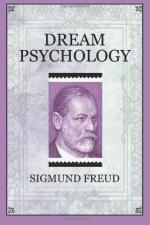through the discovery of the latent thoughts of the
dream. These thoughts concern themselves only
with things that seem important and of momentous interest
to us. The dream never occupies itself with trifles.
But we have also concurred with the contrary view,
viz., that the dream gathers up the indifferent
remnants from the day, and that not until it has in
some measure withdrawn itself from the waking activity
can an important event of the day be taken up by the
dream. We found this holding true for the dream
content, which gives the dream thought its changed
expression by means of disfigurement. We have
said that from the nature of the association mechanism
the dream process more easily takes possession of
recent or indifferent material which has not yet been
seized by the waking mental activity; and by reason
of the censor it transfers the psychic intensity from
the important but also disagreeable to the indifferent
material. The hypermnesia of the dream and the
resort to infantile material have become main supports
in our theory. In our theory of the dream we
have attributed to the wish originating from the infantile
the part of an indispensable motor for the formation
of the dream. We naturally could not think of
doubting the experimentally demonstrated significance
of the objective sensory stimuli during sleep; but
we have brought this material into the same relation
to the dream-wish as the thought remnants from the
waking activity. There was no need of disputing
the fact that the dream interprets the objective sensory
stimuli after the manner of an illusion; but we have
supplied the motive for this interpretation which
has been left undecided by the authorities. The
interpretation follows in such a manner that the perceived
object is rendered harmless as a sleep disturber and
becomes available for the wish-fulfillment. Though
we do not admit as special sources of the dream the
subjective state of excitement of the sensory organs
during sleep, which seems to have been demonstrated
by Trumbull Ladd, we are nevertheless able to explain
this excitement through the regressive revival of
active memories behind the dream. A modest part
in our conception has also been assigned to the inner
organic sensations which are wont to be taken as the
cardinal point in the explanation of the dream.
These—the sensation of falling, flying,
or inhibition—stand as an ever ready material
to be used by the dream-work to express the dream
thought as often as need arises.
That the dream process is a rapid and momentary one seems to be true for the perception through consciousness of the already prepared dream content; the preceding parts of the dream process probably take a slow, fluctuating course. We have solved the riddle of the superabundant dream content compressed within the briefest moment by explaining that this is due to the appropriation of almost fully formed structures from the psychic life. That the dream is disfigured and distorted




